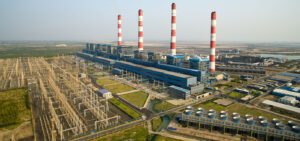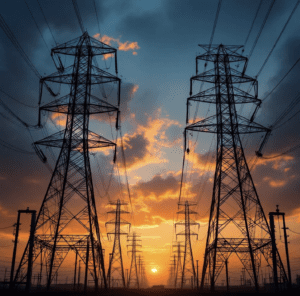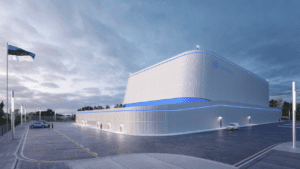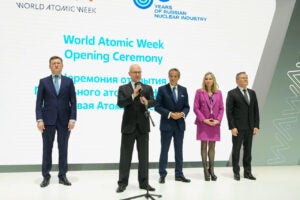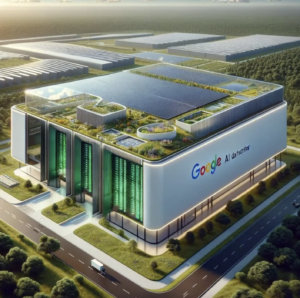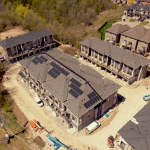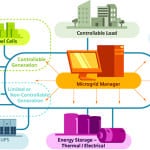I’ve always been drawn to the swarm ship design concept in science fiction. The idea is that what initially looks like one massive spaceship is actually a cluster of really small vessels that can split apart when the going gets tough. As one, it’s efficient; as many, it’s resilient.
This concept offers a powerful consideration for what the electrical grid could be. For nearly a century, the grid has been one, solid, hulking, inflexible machine. Now, with the rise of technologies like microgrids, distributed renewables, battery storage, and vehicle-to-grid applications, we can reimagine the grids that enclose our communities to be like those fictional spaceships. Nominally together for efficiency, but modular when advantageous. It’s an idea that has recently seen progress. Through the concept of a smart energy community, people are looking at the monolithic grid that surrounds them and reimagining it in a more human-centric way.
Remote Communities Benefit
Clustered 28 miles off the southwest coast of Great Britain, the Isles of Scilly are home to 2,200 residents and an electrical dilemma. While they are connected to the larger grid, there’s only one long, snaking cable that brings electricity across the seabed from the mainland. The resulting power is expensive and unreliable. In the past, residents frequently had to shut off certain appliances so others could access the available trickle of power.
This remote and unreliable energy environment made for a perfect test of smart energy community concepts. With funding from the European Union, Hitachi launched an extreme grid makeover on the archipelago. The Isles are now better able to manage their own electrical needs through use of solar generation; battery storage systems; efficient heating, ventilation, and air conditioning equipment; and microgrids (a way for the island to become its own miniature grid disconnected from the mainland).
The system essentially draws a series of concentric circles for grid operation. A home can operate as a small grid and coordinate with the microgrid as needed, which in turn can coordinate with the mainland grid as needed. The result is that power on the islands is cheaper, cleaner, and more reliable than at any time in the Isles’ history. Hitachi also aims to incorporate electric vehicles, vehicle-to-grid technology, and its own artificial intelligence-based microgrid management system to further optimize grid function.
Urban Communities Benefit
People living in the world’s largest cities can also utilize smart energy community strategies. For example, the Park Slope neighborhood in Brooklyn, New York, used smart energy concepts with the help of LO3 Energy to install a neighbor-to-neighbor solar trading platform. After implementing a smart meter system and some aspects of blockchain, those who produce solar power can sell their excess energy directly to their neighbors in a system that extends the concept of “buy local” to electricity.
Smart energy community ideas are also finding a home in new residential developments. More potential homebuyers are becoming aware of the benefits smart energy technologies can offer and are seeking them out. Taking note, developers are beginning to include them in residential projects as a highly marketable feature. Alabama Power has worked with housing developers in the Birmingham area to place new neighborhoods on microgrids that integrate solar generation, storage, and efficient homes to provide an extra layer of energy resilience to these suburban communities.
Policies Will Become More Flexible
With the right combinations of smart energy technologies, communities have the ability to boost their energy resilience while also lowering costs and emissions. What’s exciting about this reimagination of energy is that (from a technical point of view) it’s ready to be implemented. The barriers that face this energy transformation are more human in nature. Introducing this level of flexibility and self-sufficiency to the electrical grid runs counter to a century of established norms and policies. While there exists plenty of examples of how to implement these projects and the benefits they can bring, many established stakeholders are weary about implementing them. Historically, the grid has been a one-way street, and that unidirectionality is the basis for most existing profit models.
While suppliers and residents are growing more familiar with the combinations of technologies that make a smart energy community, there is a lack of this understanding within the policy sphere. As more and more people look to boost their energy resilience, however, an increasing amount of pressure will be placed on grid authorities to make this type of arrangement commonplace.
Not only are consumers beginning to see the potential benefits of this system, they also are requiring them. Electrical supply vendors are starting to see a massive new market. Those forces pressure our existing grid systems, both physical and regulatory, to be better versions of themselves. Because of this, the future of our grid is beginning to look like that fictional spaceship that has always intrigued me—one large machine for convenience, many small machines when stressed. ■
—Grant Samms is a research analyst contributing to Guidehouse Insights’ Smart Cities Tracker solution.
His research focuses on energy use and efficiency, smart city development, and the human/built environment interface.


